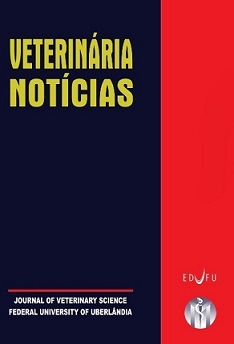Nanocomposite of Ag-Doped ZnO and Ag2O nanocrystals in control of Salmonella Heidelberg biofilms formed in commercial eggs
DOI:
https://doi.org/10.14393/VTN-v27n3-2021-56726Abstract
Salmonella spp. is an important causal agent of salmonellosis in humans. The control of Salmonella spp. is important in eggs since the bacterium passes through shell to embryo and remains in the lots of poultry that can carry the infection to the human. Disinfection is usually done by several sanitizers, but with nanotechnology advances, new and more efficient ways of controlling this agent are being studied, such as nanoparticles. Preliminary studies of these nanoparticles have shown the success of their use in the control of microorganisms. The standardization of the ideal concentration for the use of this nanocomposite is fundamental for optimum efficiency in the control of Salmonella spp. Eggs from red commercial laying were purchased from local trade were used. In the laboratory the eggs were treated with the nanoparticles in different concentrations and after 24 hours formed the biofilm. The eggs were washed for removal of the free bacteria and performed conventional microbiology for isolation of Salmonella spp. and PCR for identification of colonies. The aim of this article was evaluated the effectiveness of the use of nanocomposite of silver oxide with silver oxide doped zinc oxide (ZnO:Ag-AgO) in different concentrations in the prevention of the formation of eggshell biofilms.

